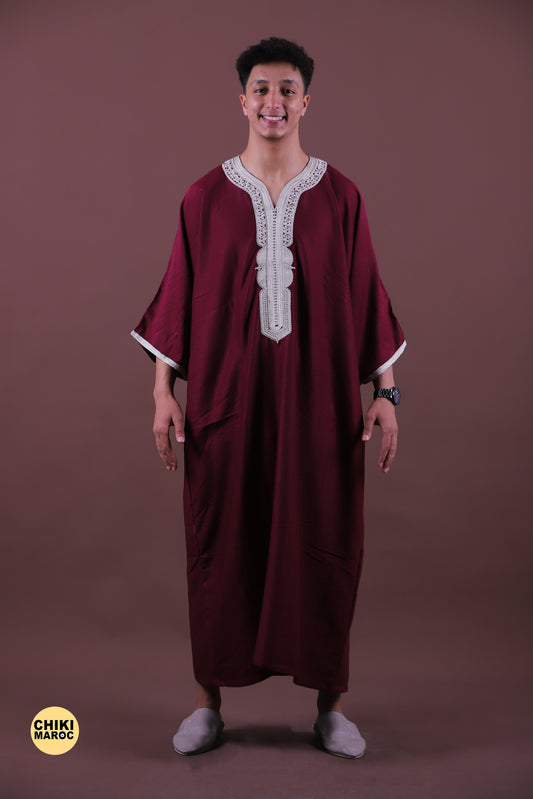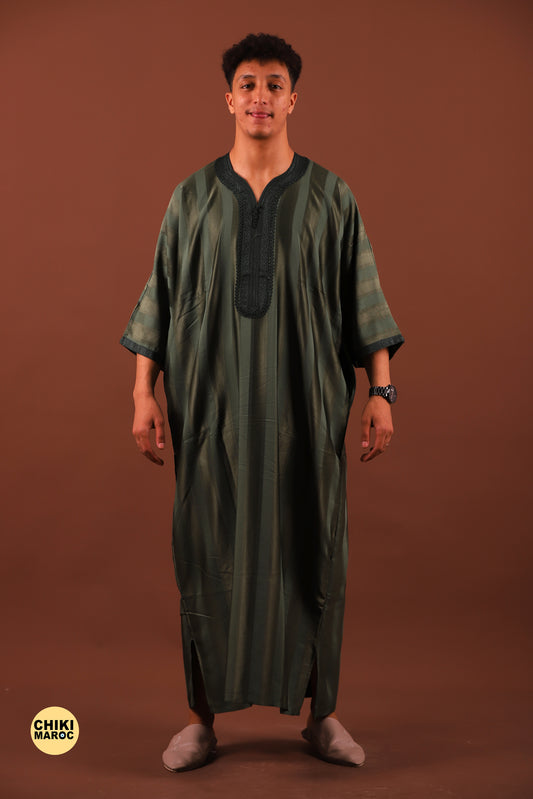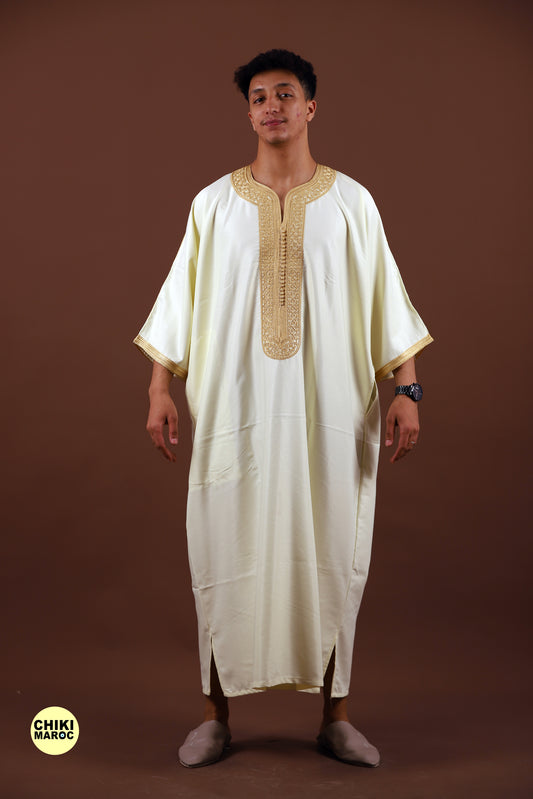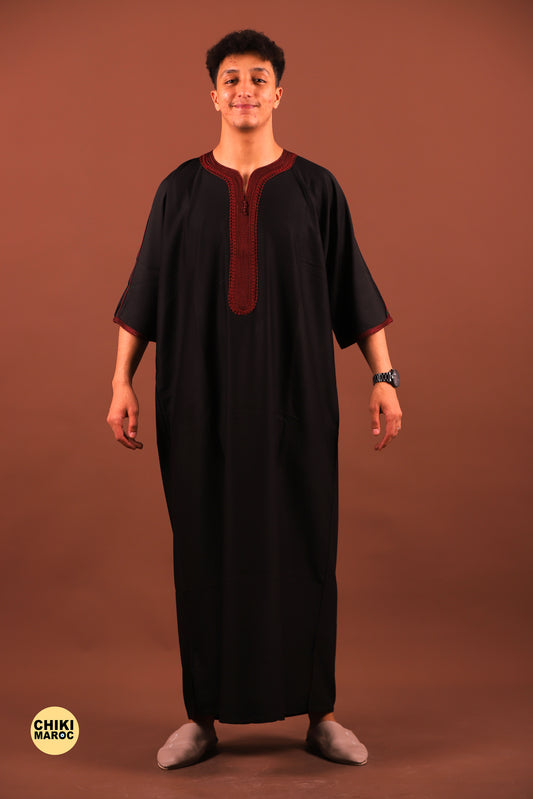Moroccan jalaba and kaftan dresses are both iconic garments known for their elegance and cultural significance. While they share similarities in their flowing silhouettes and traditional roots, there are distinct differences that set them apart. This article delves into the unique characteristics, cultural origins, and stylistic nuances of Moroccan jalaba and kaftan dresses, offering insights into their respective roles in fashion and cultural heritage.
Origins and Cultural Significance
Moroccan Jalaba:
The jalaba originates from Morocco and holds a prominent place in Moroccan traditional attire. It is characterized by its loose, flowing design and often features long sleeves and a hood. The jalaba is worn by both men and women in Morocco, serving as a practical and culturally significant garment that reflects Moroccan craftsmanship and cultural identity. Traditionally, jalabas are made from wool or cotton and may include intricate embroidery or decorative elements that showcase the artisanal skills of Moroccan craftsmen.
Kaftan Dresses:
Kaftan dresses, on the other hand, have roots that extend across various cultures, including the Middle East, North Africa, and Asia. Originally worn as robes by nobility and royalty, kaftans evolved into garments worn by both men and women, adapting to regional styles and fashion preferences. Kaftan dresses are characterized by their loose, flowing silhouettes and can vary in length from ankle-length to knee-length. They often feature embellishments, vibrant prints, or intricate patterns that reflect cultural traditions and artistic influences.
Design and Structure
Moroccan Jalaba:
The jalaba typically features a straight-cut design that drapes loosely over the body. It may include a hood, long sleeves, and a front closure with buttons or ties. The sleeves of the jalaba are often wide and may be adorned with embroidery or decorative stitching. Jalabas are designed to provide warmth and comfort, making them suitable for the cooler climate of Morocco's mountainous regions.
Kaftan Dresses:
Kaftan dresses are known for their versatility in design and style. They can vary in sleeve length and neckline, offering options such as long sleeves, three-quarter sleeves, or sleeveless designs. Kaftans often have a V-neck or round neckline and can feature embellishments around the neckline, cuffs, or hemline. The silhouette of kaftan dresses is typically more relaxed and flowing compared to the structured design of the jalaba.
Cultural Adaptations and Modern Trends
Both Moroccan jalaba and kaftan dresses have adapted to modern fashion trends while preserving their cultural heritage. In Morocco and beyond, designers incorporate contemporary elements such as bold prints, innovative fabrics, and modern cuts to appeal to a global audience. While traditional jalabas maintain their cultural authenticity and craftsmanship, modern interpretations of kaftan dresses embrace diverse influences and style preferences.
Occasions and Usage
Moroccan Jalaba:
Jalabas are worn for various occasions in Morocco, including weddings, religious ceremonies, and cultural celebrations. They symbolize tradition, cultural pride, and respect for Moroccan heritage. Jalabas may be worn by both men and women and are often tailored to reflect regional customs and personal preferences.
Kaftan Dresses:
Kaftan dresses are versatile garments suitable for a range of occasions, from formal events to casual outings and beachwear. They are favored for their comfort, elegance, and ability to transcend cultural boundaries. Kaftans can be styled with accessories such as belts, jewelry, or scarves to create personalized looks that reflect individual taste and fashion sensibility.
Conclusion
In conclusion, Moroccan jalaba and kaftan dresses are distinguished by their cultural origins, design characteristics, and stylistic nuances. While the jalaba holds a special place in Moroccan traditional attire, kaftan dresses have evolved across diverse cultures, embracing modern influences while celebrating cultural heritage. Both garments exemplify elegance, craftsmanship, and cultural identity, making them cherished symbols of tradition and fashion innovation.
Understanding the differences between Moroccan jalaba and kaftan dresses allows for a deeper appreciation of their historical significance and contemporary relevance in the world of fashion. Whether worn for cultural celebrations, special occasions, or everyday wear, jalabas and kaftan dresses continue to captivate with their timeless allure and enduring appeal across generations and borders





